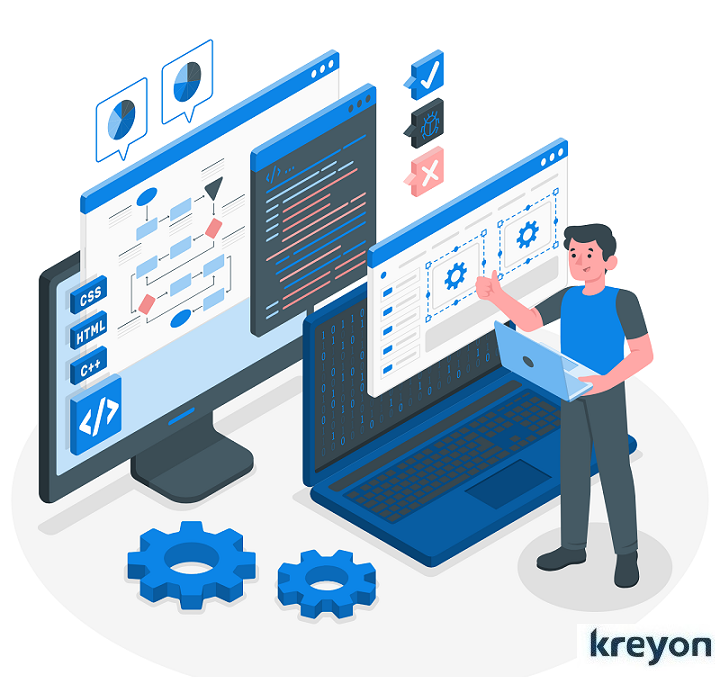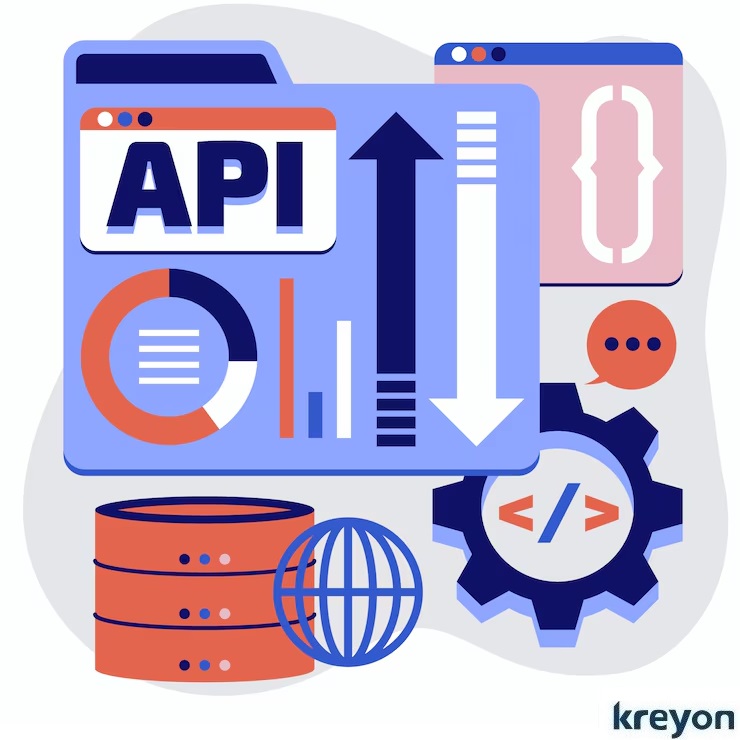The Comprehensive Guide to API Management for ERP Solutions

A study by Forrester Research found that companies with mature API management practices see a 20% increase in developer productivity and a 15% reduction in application development costs.
ERP solutions play a pivotal role in streamlining business processes, enhancing operational efficiency, and enabling data-driven decision-making. At the heart of many modern ERP implementations lies the integration prowess of APIs (Application Programming Interfaces).
APIs facilitate seamless communication between different software applications, allowing ERP systems to connect with various internal and external systems, applications, and services.
The number of APIs (Application Programming Interfaces) used by businesses is skyrocketing. According to API metrics, the average enterprise uses over 300 APIs. This explosion creates a challenge: how to manage the creation, deployment, and ongoing maintenance of these APIs effectively.
Understanding API Lifecycle Management
API Lifecycle Management refers to the process of managing APIs from their inception through retirement. This comprehensive approach ensures that APIs are designed, developed, deployed, monitored, and optimized effectively throughout their lifecycle.
For ERP solutions, robust API Lifecycle Management is crucial for ensuring integration success, data integrity, security, and scalability.
1. First Steps in Implementing API for Your ERP
In the Design Phase, careful planning and adherence to best practices are essential. APIs need to be designed with a clear understanding of ERP system requirements, integration points, and future scalability. Key considerations include:
Here are some key considerations when implementing API for your ERP system:
Identify Your Needs: Analyze how you currently use APIs and what challenges you face.
Evaluate Tools and Platforms: Choose an API LM solution that integrates seamlessly with your existing ERP system and offers the features you need.
Establish Governance: Define clear guidelines for API design, access control, and versioning to ensure consistency and security.
API Design Principles: Implementing RESTful design principles or utilizing GraphQL for flexible data querying.
Specification Tools: Leveraging tools like OpenAPI for documenting API specifications and ensuring consistency.
Invest in Development Training: Educate your developers and IT teams on how to leverage API LM tools and best practices.
For e.g. a manufacturing company integrates its ERP system with its CRM platform using APIs to synchronize customer data, order information, and inventory levels in real-time.
2. Development Phase

During the Development Phase, developers translate API designs into functional code. Agile methodologies and collaboration between ERP developers and integration teams are critical to meeting project timelines and quality standards. Focus areas include:
Code Quality: Implementing clean, well-documented code that adheres to ERP vendor guidelines and industry standards.
Testing: Conducting unit tests, integration tests, security and performance tests to ensure API functionality and reliability under various scenarios.
A retail chain develops APIs to connect its ERP system with third-party logistics providers for automated order fulfillment and inventory management.
3. Deployment Phase
The Deployment Phase involves preparing APIs for production release. It includes configuring security measures, scaling infrastructure, and ensuring compatibility with ERP environments. Key activities include:
Security Configuration: Implementing OAuth 2.0 for authentication and authorization, ensuring data protection and compliance with regulations.
Scaling: Deploying APIs on cloud platforms like AWS or Azure for scalability and high availability.
A healthcare provider deploys APIs to integrate its ERP system with electronic health record (EHR) systems, enabling seamless patient data exchange across facilities.
4. The API Integration Challenges

For ERPs, APIs are the doorways that allow external applications and services to access and exchange data. This can be crucial for tasks like integrating an e-commerce platform or automating supply chain processes. However, poorly managed APIs can lead to:
Security vulnerabilities: Unsecured APIs create a backdoor for hackers to access sensitive data.
Integration bottlenecks: Inconsistency in API design can make integration with other systems a slow and frustrating process.
Data silos: Lack of proper governance can lead to fragmented data across different systems, hindering decision-making.
The API implementation should guard against these common pitfalls. A well-connected and efficient API ecosystem, allows smooth data exchange, streamlined operations, and ultimately, a significant competitive advantage.
5. Management Phase
API Management is crucial post-deployment to monitor, analyze performance, and optimize APIs continuously. It involves:
Monitoring and Analytics: Using tools to track API usage, performance metrics (e.g., response times, error rates), and user behavior.
Version Control: Managing API versions, implementing backward compatibility strategies, and communicating changes to stakeholders.
GDPR: Ensuring APIs comply with GDPR requirements for handling personal data of US & EU citizens, including data protection and privacy rights.
A financial institution uses API analytics to monitor transaction volumes and detect anomalies, enhancing fraud detection capabilities.
6. Optimization and Scaling
Continuous Optimization ensures APIs remain efficient and scalable to meet growing demands and technological advancements. Strategies include:
Performance Optimization: Implementing caching mechanisms, optimizing database queries, and reducing latency for improved user experience.
Scalability: Scaling APIs horizontally or vertically using containerization (e.g., Docker, Kubernetes) to handle increased traffic and workload spikes.
An e-commerce platform optimizes APIs for Black Friday sales, ensuring high performance and reliability during peak traffic periods.
7. Benefits of API Lifecycle Management for ERP Solutions

API lifecycle management can track data flows and enforce data quality standards, leading to a unified and reliable data foundation for your ERP system.
Enhanced Integration Capabilities: Facilitates seamless integration with third-party applications, suppliers, and customers, enhancing operational efficiency.
Improved Data Accuracy: Ensures consistent and reliable data synchronization between ERP systems and external sources.
Agility and Flexibility: Enables ERP systems to adapt quickly to business changes and technological advancements through modular, scalable API architectures.
Security and Compliance: Implements robust security measures and compliance with data protection regulations (e.g., GDPR, HIPAA) to safeguard sensitive information.
Conclusion
API Lifecycle Management is pivotal for leveraging ERP solutions to their fullest potential. By following structured phases—from design and development to deployment, management, and optimization—organizations can harness the power of APIs to drive innovation, improve agility, and achieve business goals.
With the right approach to API Lifecycle Management, ERP systems can seamlessly integrate with diverse ecosystems, empower data-driven decision-making, and pave the way for digital transformation in enterprise operations.
Embracing API Lifecycle Management not only enhances ERP integration capabilities but also positions organizations to thrive in an increasingly interconnected and competitive marketplace.
Kreyon Systems simplifies API management, automates workflows, and empowers data-driven decisions with ERP solutions for your business needs. If you have any queries , please reach out to us.
